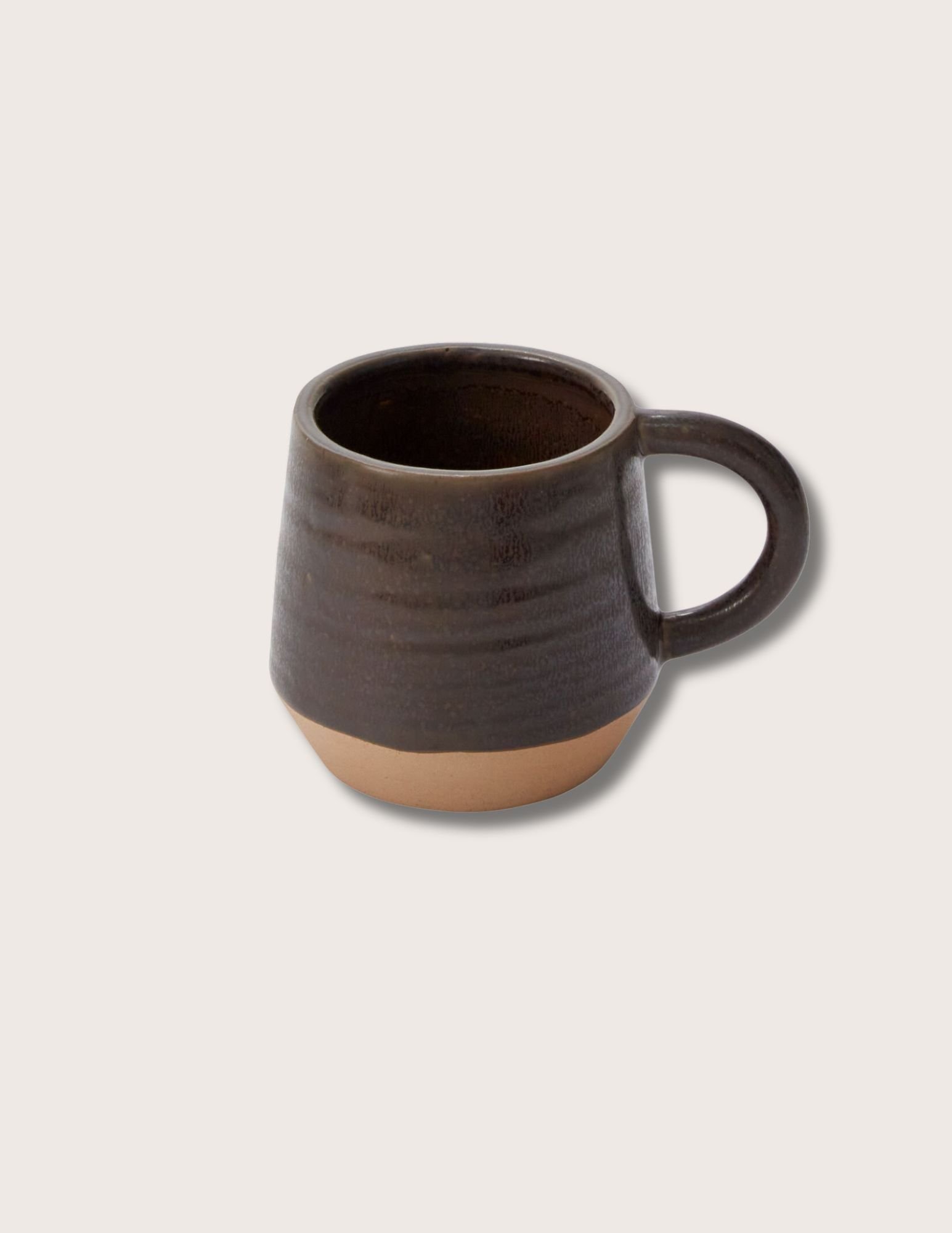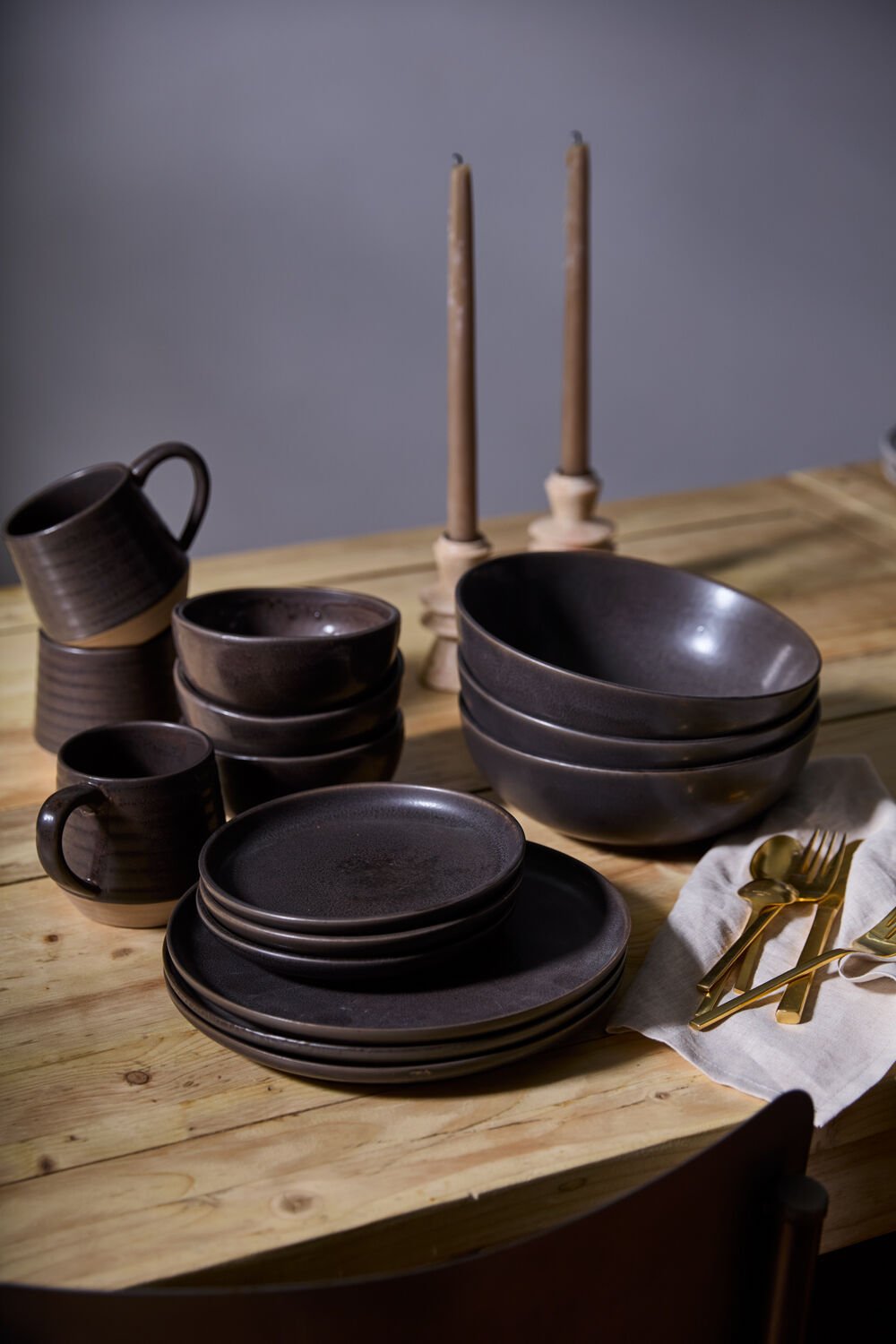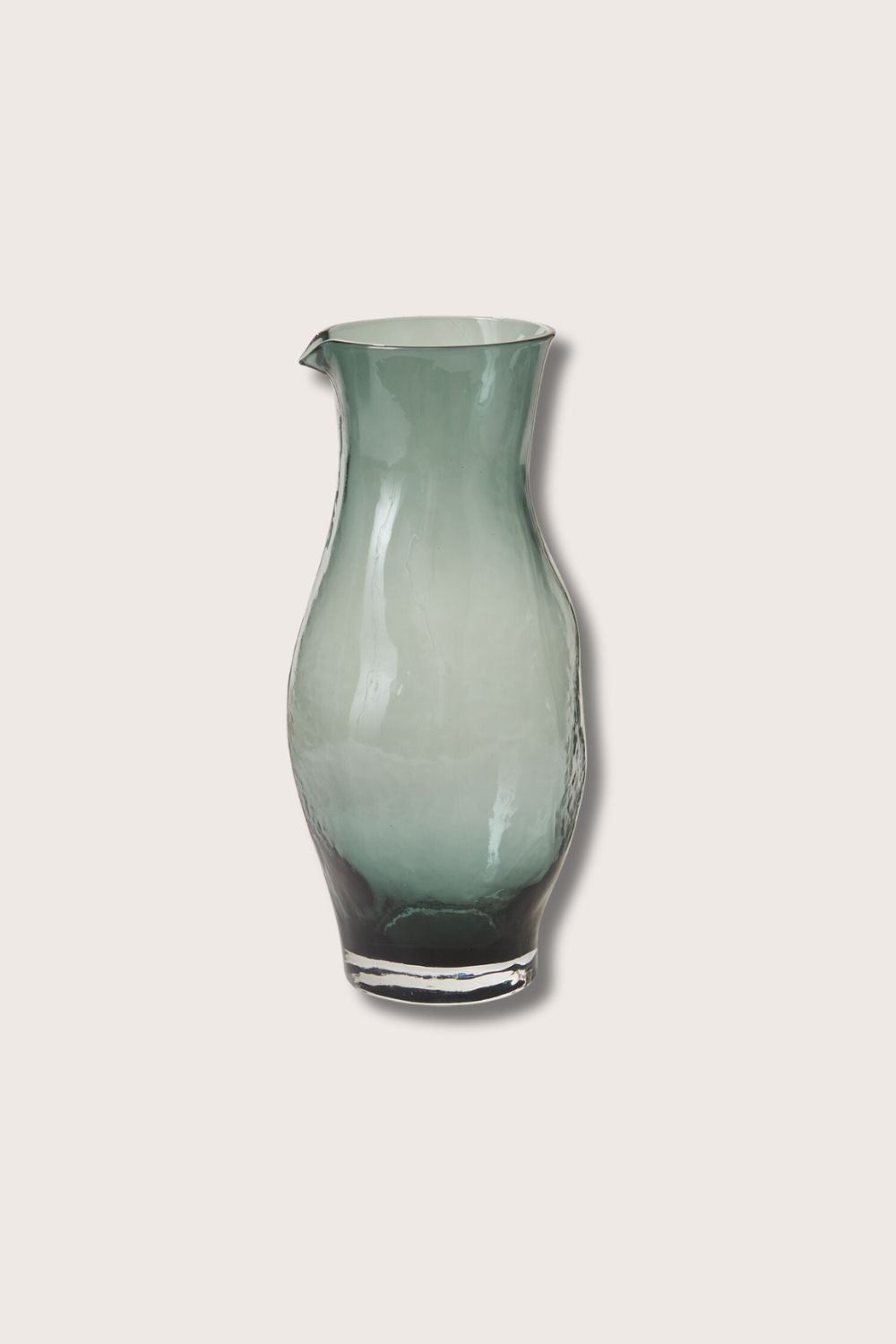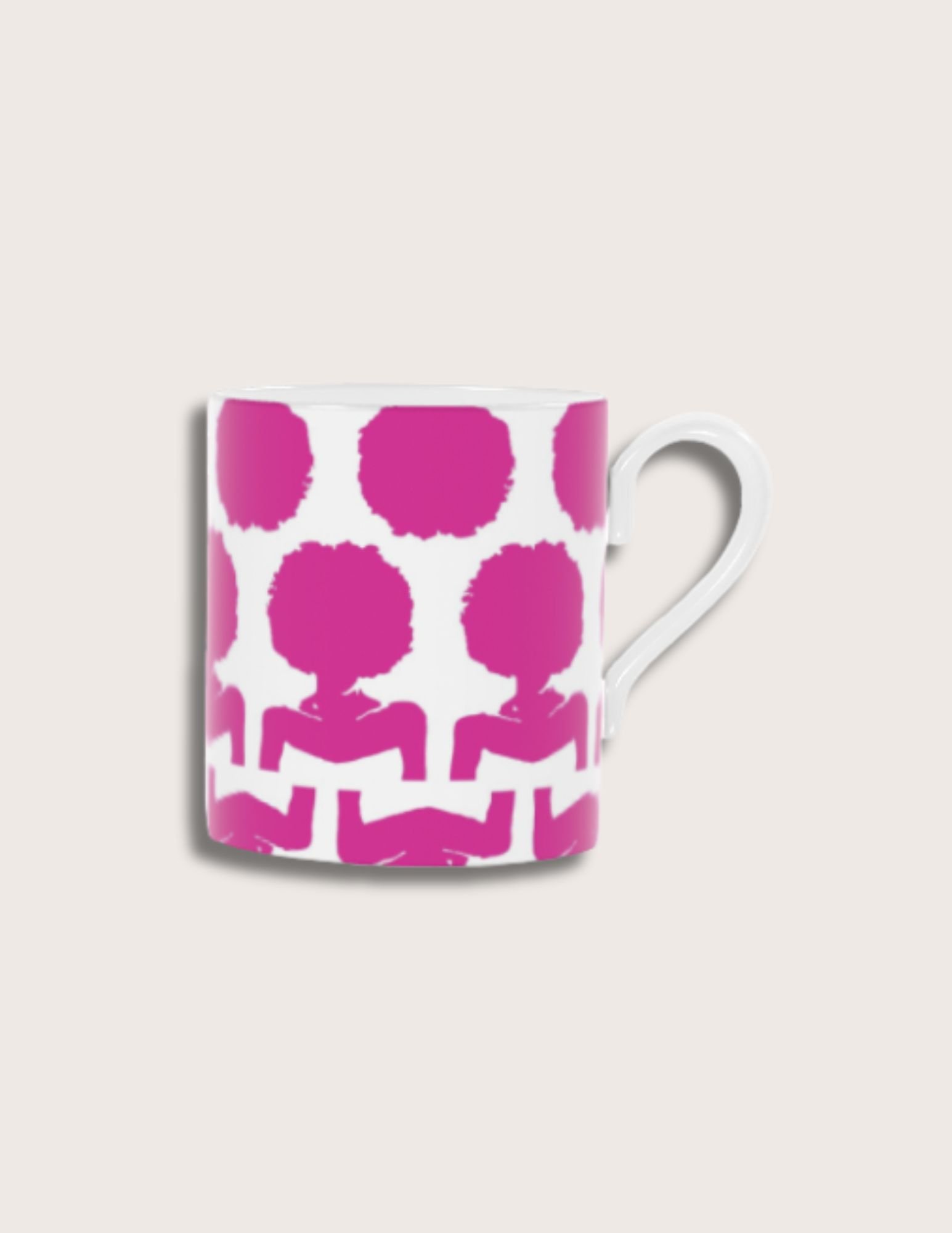 Image 1 of 2
Image 1 of 2

 Image 2 of 2
Image 2 of 2



Buna Mug Set of 4
Details
Our terracotta Buna Mug features a dark chocolate brown reactive glaze with gray and black undertones that offer variation in the color. The natural bisque base brings a nice textural and color contrast while pulling out the warm undertones of the full collection. Bring home the full Buna Dinnerware Collection for a coordinated look.
Editors' Note
While the production and consumption of coffee is a global affair, the story of this miraculous bean, celebrated early as food and medicine as well as a drink, begins in Africa. The discovery of coffee dates to between 800-850 AD in Ethiopia — then the Kingdom of Aksum — where both coffee and its ceremonial preparation are referred to as “Buna.” According to legend, credit for the discovery goes to Kaldi, a goat herder who noticed that eating certain plants seemed to give his goats an extra burst of energy. Through countless variations and embellishments over the many existing versions of the story, that much remains consistent. From there, however, histories and myths alike diverge, with many claiming that the bean and beverage both developed in Africa, others suggesting that the bean was originally used as food in Ethiopia, but that brewing was an Arabian intervention, and still others positing Yemen rather than Ethiopia as the site of discovery. It is known however — or at least widely surmised — that coffee reached Yemen, itself once part of the Aksumite Kingdom, from Ethiopia via Somali traders. It was first mentioned in the works of the 10th century Persian physician Abu Bakr Muhammad ibn Zakariya al-Razi, called, “Rhazes” elsewhere, who listed it within his catalog of medicines. From Yemen, qahwa, as coffee is called in Arabic, spread widely. By the 15th century, it was known throughout the Middle East. By the 16th, the Ottoman Empire was deeply invested in coffee as a cornerstone of its political and economic might. By the 17th century the first coffee shops were opening in Europe, including in Vienna, Austria and the English coffee-house of Pasqua Rosée, a Greek or Turkish servant of Daniel Edwards, an Englishman who traded with the Ottomans and lived for a time in Turkey. By then the British East India Company and Dutch East India companies were trading in coffee as well as enslaved Africans. These companies, and the other mechanisms of the trans-Atlantic slave trade brought coffee to the Americas where British, French and Spanish colonies all participated in the industry. By 1830, Brazil was the leading producer of coffee in the world, providing 30% of the global supply through the labor of the enslaved. By 1900, the Americas were leaders in both the production and consumption of coffee. Today, coffee continues to be grown in many parts of Africa such as Zimbabwe and Ghana, making up as much as 20% of exports from Burundi, Rwanda, Uganda, and its native Ethiopia, where the Buna coffee ceremony remains, in various forms, part of daily life. Meanwhile coffees grown on the Continent are celebrated as being among the finest in the world.
Details
Our terracotta Buna Mug features a dark chocolate brown reactive glaze with gray and black undertones that offer variation in the color. The natural bisque base brings a nice textural and color contrast while pulling out the warm undertones of the full collection. Bring home the full Buna Dinnerware Collection for a coordinated look.
Editors' Note
While the production and consumption of coffee is a global affair, the story of this miraculous bean, celebrated early as food and medicine as well as a drink, begins in Africa. The discovery of coffee dates to between 800-850 AD in Ethiopia — then the Kingdom of Aksum — where both coffee and its ceremonial preparation are referred to as “Buna.” According to legend, credit for the discovery goes to Kaldi, a goat herder who noticed that eating certain plants seemed to give his goats an extra burst of energy. Through countless variations and embellishments over the many existing versions of the story, that much remains consistent. From there, however, histories and myths alike diverge, with many claiming that the bean and beverage both developed in Africa, others suggesting that the bean was originally used as food in Ethiopia, but that brewing was an Arabian intervention, and still others positing Yemen rather than Ethiopia as the site of discovery. It is known however — or at least widely surmised — that coffee reached Yemen, itself once part of the Aksumite Kingdom, from Ethiopia via Somali traders. It was first mentioned in the works of the 10th century Persian physician Abu Bakr Muhammad ibn Zakariya al-Razi, called, “Rhazes” elsewhere, who listed it within his catalog of medicines. From Yemen, qahwa, as coffee is called in Arabic, spread widely. By the 15th century, it was known throughout the Middle East. By the 16th, the Ottoman Empire was deeply invested in coffee as a cornerstone of its political and economic might. By the 17th century the first coffee shops were opening in Europe, including in Vienna, Austria and the English coffee-house of Pasqua Rosée, a Greek or Turkish servant of Daniel Edwards, an Englishman who traded with the Ottomans and lived for a time in Turkey. By then the British East India Company and Dutch East India companies were trading in coffee as well as enslaved Africans. These companies, and the other mechanisms of the trans-Atlantic slave trade brought coffee to the Americas where British, French and Spanish colonies all participated in the industry. By 1830, Brazil was the leading producer of coffee in the world, providing 30% of the global supply through the labor of the enslaved. By 1900, the Americas were leaders in both the production and consumption of coffee. Today, coffee continues to be grown in many parts of Africa such as Zimbabwe and Ghana, making up as much as 20% of exports from Burundi, Rwanda, Uganda, and its native Ethiopia, where the Buna coffee ceremony remains, in various forms, part of daily life. Meanwhile coffees grown on the Continent are celebrated as being among the finest in the world.

Additional Details
Set of 4 mugs
Weight: 1 lb/each
Opening Size: 2.75"
Material: Ceramic
Holds 16 oz.
Dishwasher safe
Do not be use in microwave
Imported
Made to order
Ships within the continental US in 7-10 business days














